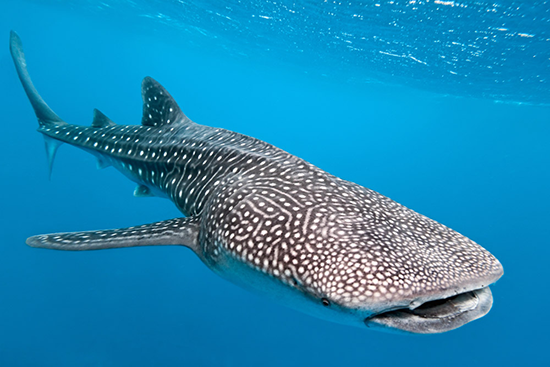10 Things You Need to Know About the Whale Shark

Each year, between the months of May and September, this spectacular animal arrives to the coasts of the Mexican Caribbean, surprising us with its huge size and unique feeding habits. Have you heard of it?
1. The whale shark (Rhincodon typus) is the biggest fish on the planet, reaching up to 59 feet in length!
2. This species prefers shallow, warm waters, or areas with sprouts of colder water rich in nutrients, since these are the conditions that favor the growth of plankton, which they feed upon. This explains the high quantity of sharks in the waters around Holbox (Quintana Roo) during the summer.

3. The marks on the whale sharks have led to a number of different local names, such as ‘pez dama’ (damsel fish) or domino, referring to the board game. Each individual has a unique pattern of marks that allows them to be identified, like a fingerprint, since it doesn’t change as it grows. It is possible that this also contributes towards their ‘social attraction.’
4. The whale shark is usually a solitary species, although you will sometimes find them co-existing alongside shoals of horse mackerels, stingrays, and fellow whale sharks.
5. The whale shark has little in common with conventional whales other than its size and the fact that it only eats minute plankton caught with its open mouth. It normally feeds on the surface or just below it, filtering the tiny organisms of plankton with its gills.

6. Whale sharks are viviparous creatures, and the pups can sometimes be seen swimming with the adults. Though there has been no official study on their reproductive habits, female whale sharks have been registered pregnant with up to 300 pups!
7. The whale shark is docile and gentle, and doesn’t get startled when approached by divers or swimmers.
8. According to the little research compiled so far, they are supposed to live to 100 years.

9. The distribution of the whale shark covers all of the tropical waters (except the Mediterranean Sea), which refers to all waters between the two tropics of the terrestrial sphere, identified by their warm temperatures.
10. This beautiful animal is found in the ‘Threatened’ category, currently protected by Mexican laws and organisms such as the CONANP (National Commission of Natural Protected Areas) and the Ley General de Vida Silvestre (General Law of Wildlife). If you go to visit them, respect all of your guide’s instructions.
